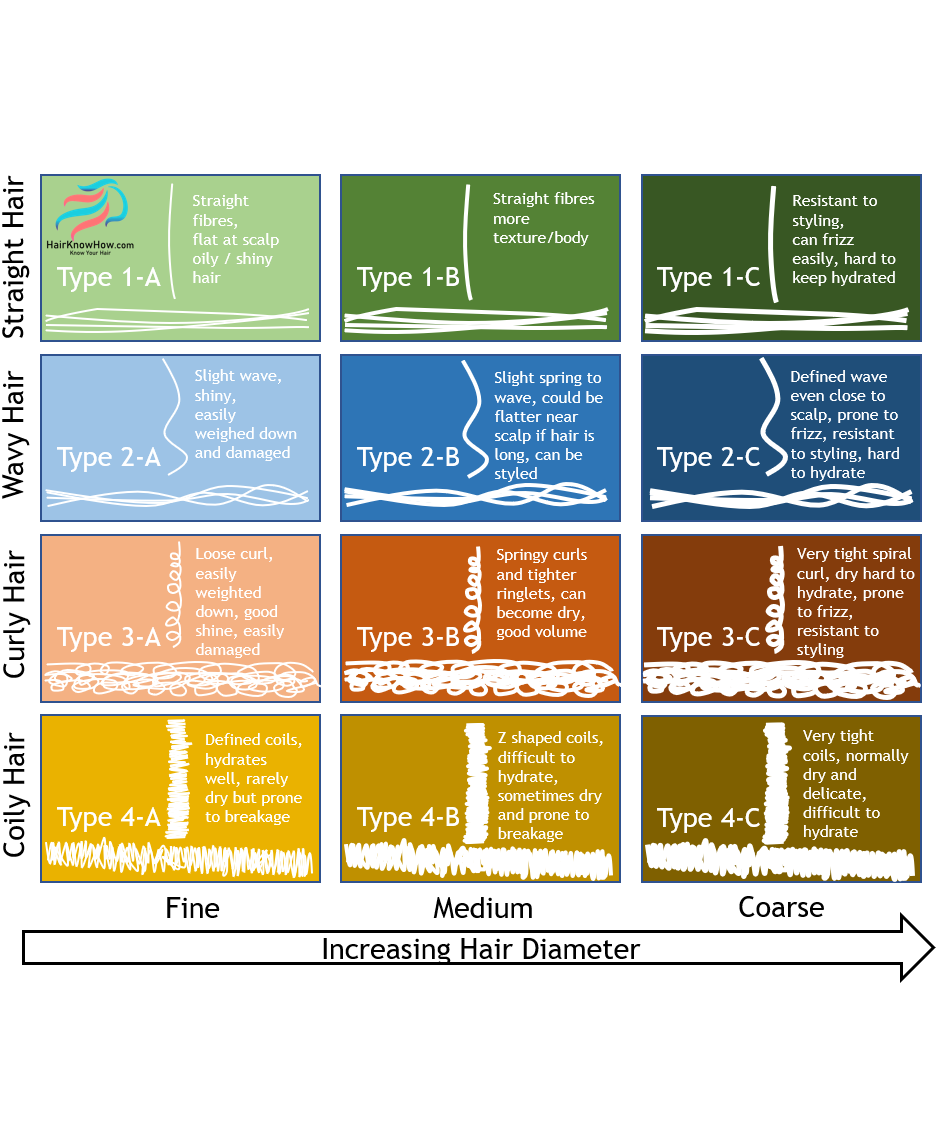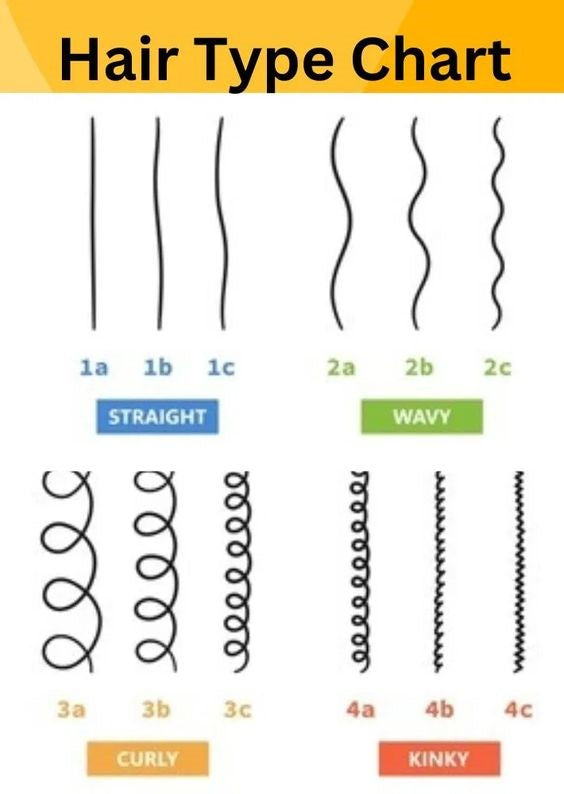
Whatare some of the differences in hair types?
Knowing your hair type is essential because there can be significant differences in your hair’s tolerance to chemical, physical treatments or routines that can lead to increased hair damage. Some hair types
are very fragile and susceptible to breakage, while others are strong but stubborn and resist styling. Your hair may naturally possess high hydration levels and be shiny or primarily dry and hard to hydrate. Other differences
can be holding a style without a product, whereas other hair types may need specific products to prevent the fibres from being weighed down, flattening a
look.
Knowing your hair type can save you time, money and worry. It can help you pinpoint routines and products that can help you achieve the look, style and hair health you are looking for.

What determines myhair type?
Your natural hair type results from the physical qualities of both your hair and follicle. These include:
- Follicle shape or geometry
- Hair diameter
- Hair length
- Porosity
What you need toknow about the different hair types
Regardlessof your hair’s natural texture (degree of curl or waviness or kink), the following will be applicable if you have the following hair:
-
TypeA. Fine Hair
Type A hair is usually thin (or fine as the name suggests!), very soft, delicate and naturally shiny. This natural shine typically comes from the relative abundance of oils produced in the follicle being more easily transported down the fibre. Fine hair is prone to flyaways and more sensitive to chemical and heat treatments. In addition, those with curly, wavy, or coily fine hair tend to find the hair close to their head flat, with the hair texture revealing itself lower down towards the ends of their hair. Fine hair can also be weighed down by many hair care products, making product choice difficult.
No matter the products you choose to use on your fine hair, we suggest remembering that “with fine hair, less is more”. Meaning that given the delicate nature of your hair, using less hydrating or other products will be required. Often using a little less product will give better-texturing results because your hair is weighed down less, revealing more of your natural curl, wave or kink.
-
TypeB. Medium Hair
Type B hair is more textured and has lots of body. It is pretty strong but still relatively easy to style. It can, however, be challenging to keep hydrated. A wide range of products can be used on medium hair types, from styling to hydration and nourishing treatments.
As with coarse hair, medium hair requires a lot of care to achieve the best natural look and health. We suggest deep conditioning using warm water and a towel for 20 minutes once a week, with your favourite nourishing conditioner with a bit of added coconut oil mixed in (just a couple of drops). Also, during washing, we suggest washing your hair first with your chosen shampoo but moving onto your conditioner within two to three minutes. Leave your conditioner in for 5 minutes or more whilst you finish your shower. Lastly, rinse your hair carefully, patting lightly with a towel and allowing it to air dry if possible. Apply coconut oil at least twice a week (around five drops) to your hair in the morning. Put a couple of drops on your hand to start. Apply to your hair evenly, starting mid-hair and moving downwards towards the ends of your hair. This way, you will get the proven benefits of coconut oil throughout the day.
-
TypeC. CoarseHair
Type C hair is strong, very resistant to styling and especially difficult to hydrate, and so often suffers from increased breakage. Another challenge with coarse hair is its difficulty changing styles or just trying to control it! This difficulty results in coarse hair being pulled about excessively, subject to chemical straightening, hot irons or curling and increased brushing. All of which dramatically increase damage, breakage and frizz. It can be very frustrating.
The biggest challenge with coarse hair is hydration and nourishment. Coconut oil should go a long way to helping keep your hair healthy, strong and looking great. Like medium hair, we recommend up to two deep conditioning sessions a week, using a good nourishing conditioner mixed with five drops of coconut oil. After washing, put this mixture on your hair and wrap your head in a towel for around 30 minutes. In-between washing twice a week, hydrate and nourish your hair using coconut oil. You’ll need about 8-10 drops of coconut oil in total (adjust for your hair length and density). Rub your hands together and spread it evenly throughout your hair, ideally in the morning. Therefore, you get the proven benefits of coconut throughout the day.